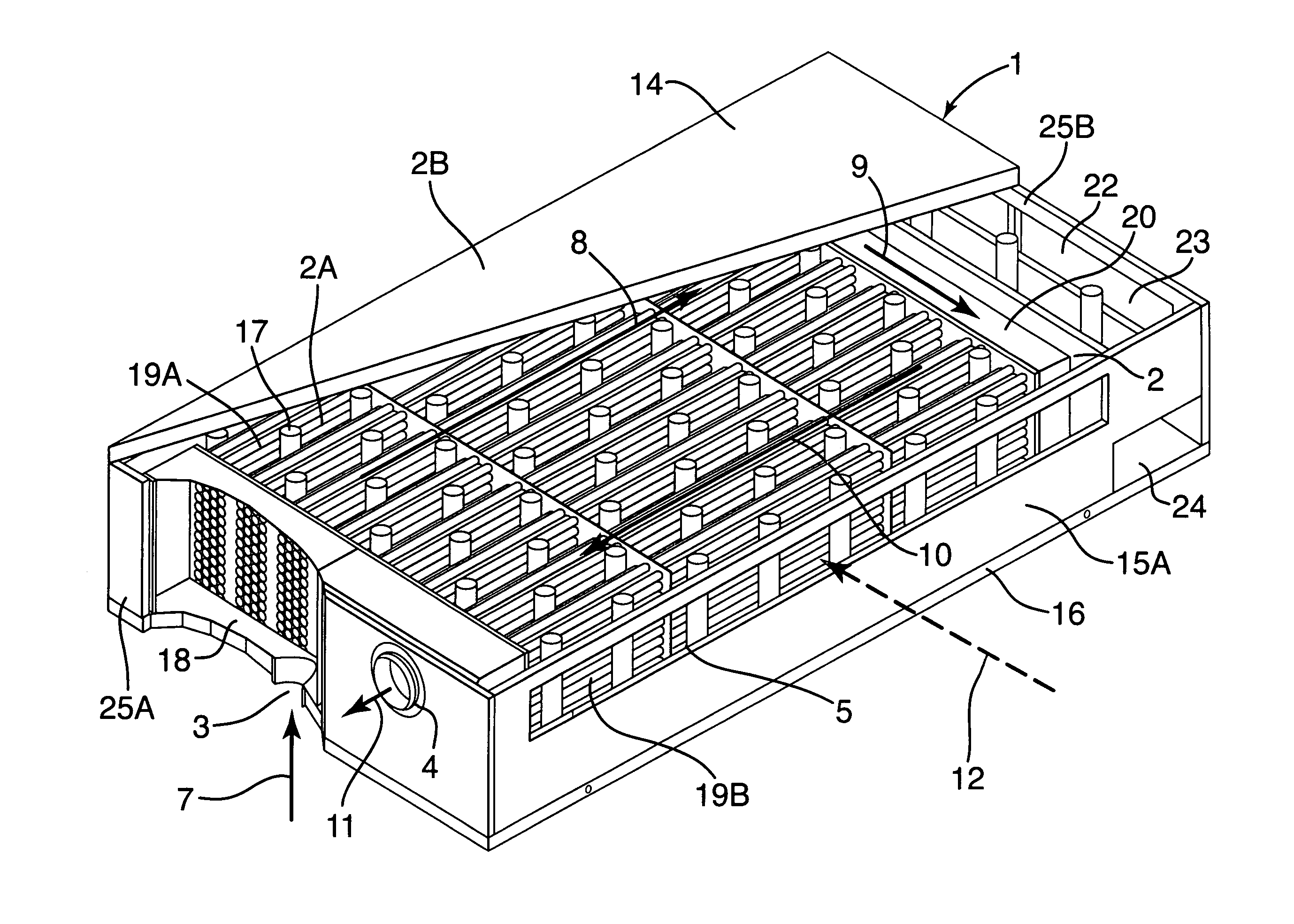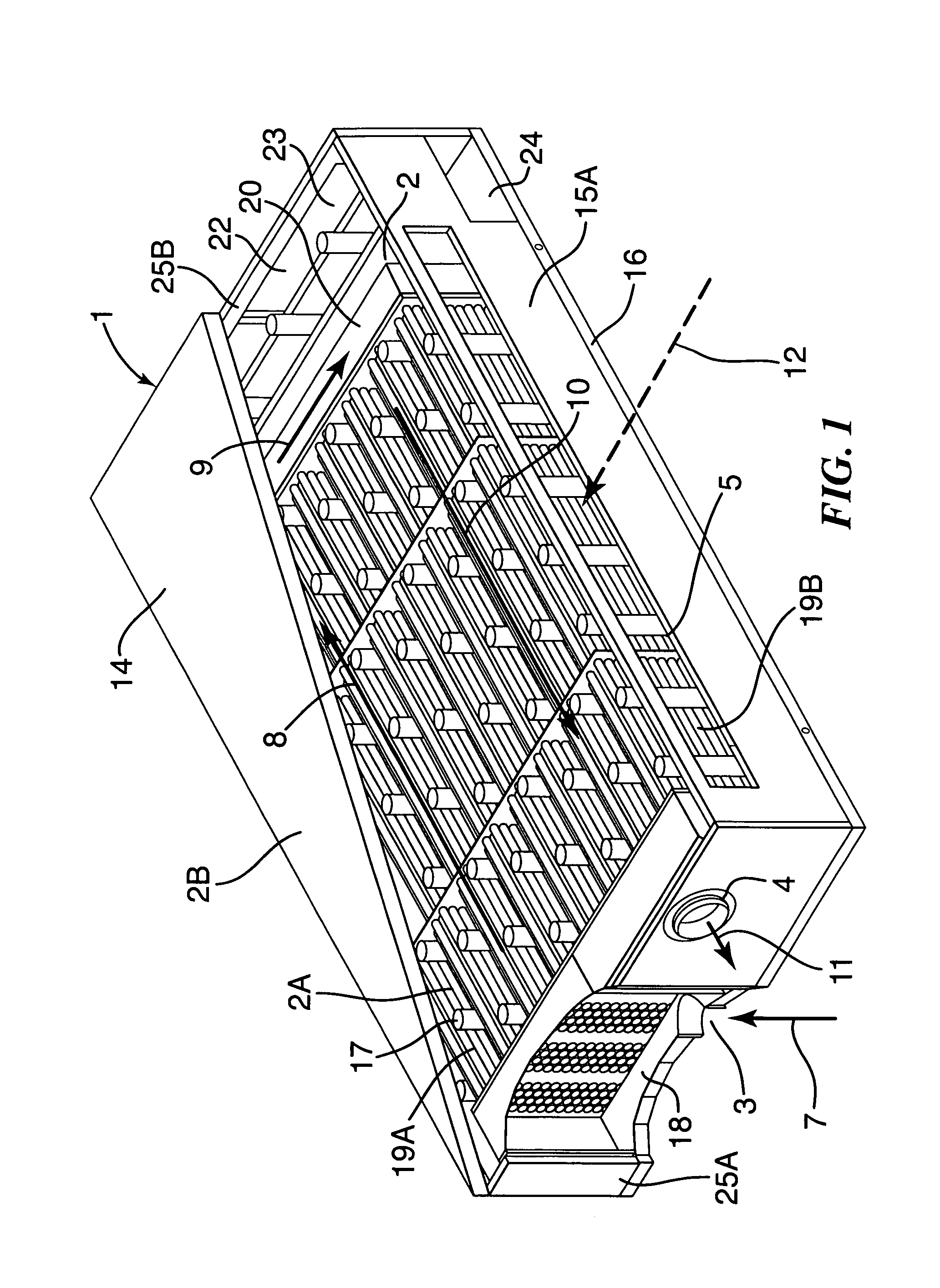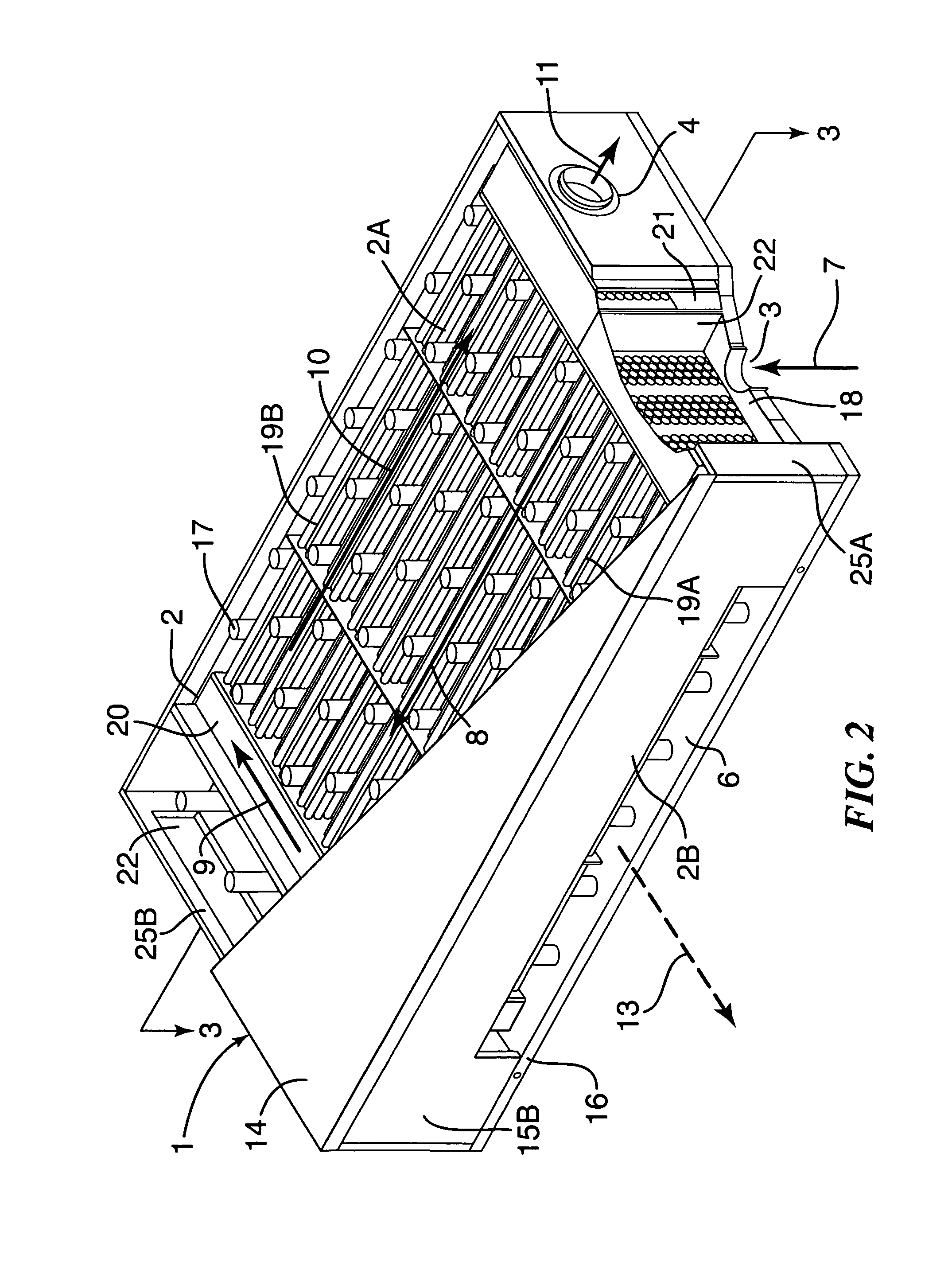Fuel cell end unit with integrated heat exchanger
a fuel cell and heat exchanger technology, applied in the field of end plates and heat exchangers for fuel cell systems, can solve the problems of increasing the size and cost of the system, increasing the risk of cell-to-cell wet seal leakage, and non-uniform stack inlet temperature distribution
- Summary
- Abstract
- Description
- Claims
- Application Information
AI Technical Summary
Problems solved by technology
Method used
Image
Examples
Embodiment Construction
[0015]Referring to FIGS. 1, 2 and 3, the illustrative embodiment of the invention has an end unit 1 adapted to be attached to one end of a fuel cell stack. The end unit 1 houses an assembly 2 including first and second units 2A, 2B associated with the flow of a first and second gas, respectively, through the assembly and which act together as a heat exchanger. In the case shown, the first and second gases are fuel cell stack anode or fuel inlet gas and fuel cell stack cathode exhaust gas, respectively.
[0016]Particularly, the first unit 2A has an inlet 3 through which fuel gas passes (depicted by arrow 7) into an inlet chamber 18. Fuel gas collects in inlet chamber 18, flows in a direction 8 through a first set of tubes 19A and is delivered to a turn plenum 20. Fuel gas flows in a direction 9 through the turn plenum 20 and from the plenum 20 flows in a direction 10 through the tubes 19B. The gas is delivered by tubes 19B to an outlet chamber 21 (shown in FIGS. 2 and 3). Fuel gas exit...
PUM
| Property | Measurement | Unit |
|---|---|---|
| area | aaaaa | aaaaa |
| thick | aaaaa | aaaaa |
| heat | aaaaa | aaaaa |
Abstract
Description
Claims
Application Information
 Login to View More
Login to View More - R&D
- Intellectual Property
- Life Sciences
- Materials
- Tech Scout
- Unparalleled Data Quality
- Higher Quality Content
- 60% Fewer Hallucinations
Browse by: Latest US Patents, China's latest patents, Technical Efficacy Thesaurus, Application Domain, Technology Topic, Popular Technical Reports.
© 2025 PatSnap. All rights reserved.Legal|Privacy policy|Modern Slavery Act Transparency Statement|Sitemap|About US| Contact US: help@patsnap.com



